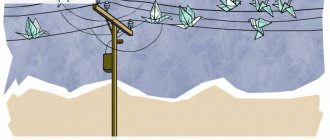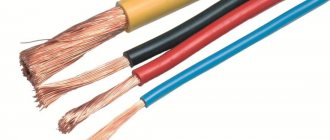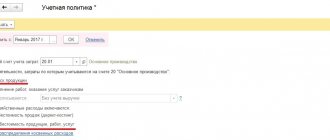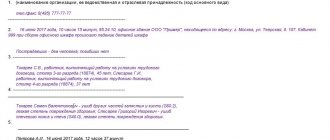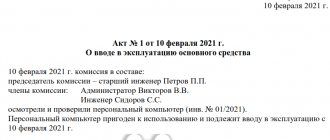Identifying and maintaining records of manufacturing defects
It is quite natural that, as part of the production process, companies are faced with the problem of producing defective products, which implies that the manufactured product does not meet the quality or technical parameters. As a result, the manufactured finished products cannot be used for their intended purpose.
Experts identify the following types of production defects:
Taking into account the nature of the identified defect, the following should be highlighted:
- correctable imperfection, when the use of the finished product is feasible from an economic point of view and possible from a technical point of view;
- irreparable defect, when the finished product cannot be corrected from an economic point of view.
By location of detection of the deficiency:
- an internal defect that is detected at the plant itself;
- an external defect that is discovered by the buyer after the sale of the goods.
To keep records of low-quality products, the technical control department created within the structure of factories and workshops generates a document indicating the fact that a defect has been identified and the type to which it relates. It is allowed to form the designated paper in any form. However, here we should take into account paragraph 2 of Article 9 of the Law of the Russian Federation “On Accounting”.
It is also important to understand that accounting for faults in production is also required from the point of view of fiscal accounting. This is due to the fact that losses from production shortfalls reduce the tax base for income tax. When taking into account the costs of production defects, you should take into account only those costs that were not attributed to inventories or the employee who made this defect.
If there is an external deficiency, the amount of VAT previously paid by the enterprise is reduced by the amount of tax on the sale of the returned goods.
HIGHLIGHTS OF THE WEEK
01/27/202109:00 Taxes
Tax deductions can be obtained without 3-NDFL
28.01.202118:01
Accounting and reporting
Five changes in the work of an accountant and one requirement from February 1, 2021.
30.01.202116:18
Special modes
Answers to questions from the Federal Tax Service for individual entrepreneurs on a patent
27.01.202115:25
Special modes
Individual entrepreneur on PSN: recommended form of notification of tax reduction on insurance premiums
yesterday at 10:5710:57
Checks
Consolidated inspection plan for 2021 published
PODCAST 4.12.2020
What has changed in taxes and reporting since 2021?
All episodes
Comments on documents for an accountant
Is it possible to apply NAP when assembling and selling computer systems?
02.02.2021 Federal legislation establishes a list of types of activities for which approximation is permitted...
The employer pays for the trip: is personal income tax charged?
02.02.2021 Personal income tax is not paid if the employer fully or partially finances the voucher, which allows...
Subsidy for coronavirus prevention: what other questions remain?
02/01/2021 The Federal Tax Service reminded under what conditions SMEs can receive a subsidy from the state.
‹Previous›Next All comments
Necessity of 26 accounts for accounting
Account 28 is intended to summarize information about the company’s losses from defective products in production. The debit part reflects the identified internal and external deficiencies. The credit portion of the company reflects the amounts used to reduce losses from the production of products that do not meet quality requirements. These may be amounts that, for example, must be recovered from counterparties for the supply of low-quality materials or raw materials from which the defective product was subsequently manufactured, or amounts that must be recovered from those responsible for the production defect. Analytics for this category of losses is carried out for each structural division of the company, types of manufactured products, as well as the reasons or culprits for such a case.
Kinds
By the nature of the defects
Based on the nature of the defects that arise, manufacturing defects can be divided into 2 categories:
- Correctable (partial), i.e. those products that, after adjusting and correcting detected defects, will be able to meet the requirements of the standards established at the enterprise if this is technologically acceptable and economically justified.
- Incorrigible (complete), i.e. those manufactured products whose defects cannot be corrected for technical or economic reasons.
Where defects were found
According to the location of detection of defects, defects can be:
- Internal - defects in manufactured products are identified by the organization itself, and the product is recognized as non-conforming to standards before being sent for sale.
- External – defects are detected by consumers when using the product.
Typical accounting entries
For a serviceable defect, typical accounting entries for item 28 look as follows:
1) Dt 28
Kt 10, 70, 69, 25 and 26 – write-off of material costs to correct the defect;
2) Dt 73.02 and 28 – recovery of the amount from the culprit;
3) Dt 20, 23
Kt 28 - expenses incurred in connection with correcting the deficiency are taken into account in the cost of production.
If we are talking about an irreparable defect, then in this situation the typical wiring will be as follows:
1) Dt 28
Kt 20 – write-off of the cost of defective products;
2) Dt 41 or 21
Kt 28 – acceptance of defective products into finished product registration;
3) Dt 73.02, 76.05 or 60
Kt 28 – the amount that was recovered from the culprit for the production of defective products;
4) Dt 20, 23
Kt 28 – losses from low-quality products written off to the cost of production.
Basic Concepts
A defect is a product, work process or its component that does not meet established requirements and standards. A defective product cannot be used for its intended purpose without correction.
Identifying and sending the finished product for revision is the concern of the quality control service, which is the most important component of the organizational structure of enterprises.
Based on the specifics of detection, marriage is divided into two large categories:
- external defect identified by the consumer;
- internal defects identified either by quality control department employees or workshop and warehouse workers.
External defects are more expensive for the enterprise, as they contribute to:
- a decrease in customer loyalty to the manufacturer and its products immediately after purchasing the first defective product;
- the formation of losses not only due to the costs of creating products, but also related costs - transportation, sales, compensation, etc.
Case from practice
Let’s imagine a situation that at a certain industrial enterprise, inspectors identified a defective product in the amount of 3 copies. As was subsequently shown in the act of internal defect, 1 of the copies refers to a correctable defect, and the remaining 2 copies should be considered an irreparable defect. Wherein:
- the cost of inventories used in the production process is 840 rubles;
- the salary of the employee who corrected the deficiency is 4,200 rubles;
- the amount of insurance contributions from accrued wages amounted to 1,340 rubles;
- 4,200 rubles were withheld from the salary of an employee who made a defect in production;
- the amount of overhead costs amounted to 170 rubles;
- the cost of returnable waste after the defective products were written off was 270 rubles.
In this situation, the accounting entries for account 28 should be as follows:
a) according to a good marriage:
1) Dt 28
Kt 10 – 840 rubles, material costs for correcting the defect;
2) Dt 28
Kt 70 – 4,200 rubles, wages for the employee who eliminated the defect;
3) Dt 28
Kt 69 – 1,340 rubles, accounting for insurance premiums of the employee who eliminated the defect;
4) Dt 73
Kt 28 – 4,200 rubles, deduction from the salary of the employee who committed the defect;
5) Dt 20
Kt 28 – 2,180 rubles, writing off the costs of eliminating the defect to the cost of the goods;
b) in the case of an irreparable defect:
1) Dt 28
Kt 20 – 6,550 rubles, write-off of the cost of defective products;
2) Dt 73
Kt 28 – 4,200 rubles, deduction from the wages of the employee who committed the defect;
3) Dt 10
Kt 28 – 270 rub., posting of returnable waste to the warehouse;
4) Dt 20
Kt 28 – 2,080 rubles, write-off of losses from defects to the cost of manufactured products.
Account 28 “Defects in production”
Account 28 “Defects in production” is intended to summarize information about losses from defects in production.
In the debit of account 28 “Defects in production”, costs are collected for identified internal and external defects (cost of irreparable, i.e.
final, defective, correction costs, etc.).
The credit of account 28 “Defects in production” reflects the amounts attributable to reducing losses from defects (the cost of rejected products at the price of possible use, amounts to be withheld from those responsible for the defects, amounts to be recovered from suppliers for the supply of substandard materials or semi-finished products, as a result the use of which was defective, etc.), as well as amounts written off to production costs as losses from defects.
Analytical accounting for account 28 “Defects in production” is carried out for individual divisions of the organization, types of products, expense items, causes and culprits of defects.
Partially, the problem of accounting for defective valuables was considered when presenting account 20 “Main production”. Let us only add that account 28 “Defects in production” belongs to the group of calculation accounts, although it also has an inventory nature, since defects in production are products (products), semi-finished products, components, structures and parts, work that do not correspond in their quality standards, technical specifications, etc., and as a result are either not at all suitable for use for their intended purpose, or can only be used after additional costs to eliminate existing defects. This allows us to distinguish between reparable and irreparable (final) marriages.
A defect is considered correctable when the defects can be eliminated and their elimination is economically feasible, i.e. the costs of correcting defects are lower than the costs of creating a new product. Losses due to correctable defects include the consumption of materials to correct product defects, payment of personnel for eliminating defects of rejected products, etc.
A defect is recognized as irreparable, the defects of which cannot be corrected or are not economically feasible (when the amount of costs for the production of defective products and for correcting the defect will be equal to or greater than the selling price of the product).
235
Based on the location of detection, a distinction is made between internal (detected at the enterprise) and external (detected by the buyer of the product).
In terms of economic content, marriage is an unproductive expenditure of material and labor resources, as a result of which it is not planned in most enterprises.
But in some industries (glass, foundry, etc.) defects cannot be completely prevented and therefore are planned within the limits of the inevitable value.
Costs for detected defects (both internal and external) are reflected in the debit of account 28 “Defects in production”.
Losses due to incorrigible internal defects are recorded in accounting by the entry:
Dt sch. 28 "Defects in production"
K-t sch. 20 “Main production”.
Internal irreparable defects are usually assessed at the cost of rejected products based on the consumption rates of raw materials and materials, wages with deductions to extra-budgetary funds, expenses for the maintenance and operation of machinery and equipment, and general production expenses.
Losses due to external irreparable defects are reflected in accounting by debiting account 28 “Defects in production” with crediting accounts 62 “Settlements with buyers and customers”, 76 “Settlements with various debtors and creditors”, etc.
External irreparable defects are assessed, as a rule, at the full cost of production with the addition of transportation costs for the return of rejected products.
Expenses for correcting defects are recorded in the debit of account 28 “Defects in production” and the credit of accounts 10 “Materials” (for the cost of materials consumed), 70 “Settlements with personnel for wages” (for the amount of wages of employees), 68 “Calculations for taxes and fees" (in the amount of the single social tax on accrued wages), etc.
The amount of losses due to defects can be reduced in a number of cases:
a) for the amount of waste (materials, spare parts, etc.) received at the warehouse at the price of possible use:
Dt sch. 10 "Materials"
K-t sch. 28 “Defects in production”;
b) for amounts subject to withholding from those responsible for the marriage: D-t. 73-2 “Calculations for compensation for material damage”
K-t sch. 28 “Defects in production”;
236
c) for amounts to be recovered from suppliers for the supply of poor-quality raw materials, materials or semi-finished products, the use of which resulted in defects:
Dt sch.
76-2 “Calculations for claims” Set of accounts. 28 “Defects in production.”
The final amount of losses due to irreparable defects is written off from account 28 “Defects in production” to the debit of account 20 “Main production” (for the cost of those products for which defects were identified). Losses due to external irreparable defects for those types of products that were not produced during the period when the defect was detected are written off to the debit of account 91 “Other income and expenses.”
Thus, the debit of the collecting and distribution account 28 “Defects in production” reflects: the cost of irreparable defects and the costs of eliminating defects in correctable defects, and on the credit of this account - the amounts attributable to reducing losses from defects, as well as the amount of final losses for irreparable marriage.
The text of the Instructions for using the Chart of Accounts has removed the provision stating that the debit of account 28 “Defects in production” collects “costs for warranty repairs in an amount exceeding the norm”, and therefore these costs should be written off in full to the debit of account 20 "Primary production".
Example.
During the production process, products were rejected at various stages of the technological process in the amount of 15,000 rubles, returned by buyers of sold products, estimated at the actual costs of their production, in the amount of 30,000 rubles.
Some of the defective products are subject to correction. To correct the defect in the amount of 20,000, materials in the amount of 2,000 rubles were spent, and wages of 3,000 rubles were accrued. and unified social tax 1068 rubles.
Part of the losses from defects is subject to compensation by the employee through whose fault the defect occurred (RUB 1,000) and by the enterprise that supplied low-quality raw materials (RUB 4,000). Other rejected products cannot be restored. However, irreparable rejected products can be used for other purposes. The assessment of these products at the price of possible use is 6,000 rubles.
Solution.
1. Rejection of products with unfinished technological processing in the amount of 15,000 rubles was accepted for accounting.
237
Dt sch.
28 "Defects in production"
K-t sch. 20 “Main production”.
2. Rejected sold finished products returned by the buyer were accepted for accounting at the actual cost of 30,000 rubles.
Dt sch. 28 “Defects in production” Set of accounts. 43 “Finished products”.
3. Materials were released to correct the defect in the amount of 2000 rubles. Dt sch. 28 "Defects in production"
K-tsch. 10 "Materials".
4. Wages were accrued to workers engaged in work to correct defects in the amount of 3,000 rubles.
Dt sch. 28 "Defects in production"
K-t sch. 70 “Settlements with personnel for wages”.
5. A single social tax was assessed on the wages of workers engaged in work to correct defects in the amount of 1068 rubles.
Dt sch. 28 "Defects in production"
K-t sch. 69 “Calculations for social insurance and security.”
6. The costs of correcting defective products subject to sale or further technological processing were written off in the amount of RUB 26,068. (20,000 + 2000 + 3000 + 1068).
Dt sch. 20 “Main production” Set of accounts. 28 “Defects in production.”
7. Amounts to be withheld from those responsible for the marriage were accrued in the amount of 1000 rubles.
Dt sch. 73-2 “Calculations for compensation for material damage” Set of accounts. 28 “Defects in production.”
8. Amounts to be recovered from suppliers for the supply of low-quality material have been accrued in the amount of 10,000 rubles.
Dt sch. 76-2 “Calculations for claims” Set of accounts. 28 “Defects in production.”
9. Products that cannot be corrected were accepted for accounting at a cost of possible use of 6,000 rubles.
Dt sch. 10 "Materials"
K-t sch. 28 “Defects in production.”
10. Losses due to defects that cannot be corrected were written off in the amount of 8,000 rubles. (30,000 + 15,000+ 2000 + 3000 + 1068 - 26,068 - 1000- 10,000-6000).
Dt sch. 20 “Main production” Set of accounts. 28 “Defects in production.”
238
Features of accounting for value added tax in case of detection of internal defects
In practice, the question often arises as to whether it is necessary to restore value added tax (hereinafter referred to as VAT) on the cost of material assets that were used in the production of defective products.
Note that there are two points of view regarding the need to restore VAT.
Some experts (including tax authorities) believe that if the defective products are not subsequently sold, then the VAT previously accepted for deduction, in the part attributable to the cost of inventories used in the production process of the defective products, should be restored and paid to the budget. Let us note that in some cases the courts take the side of the tax authorities, as evidenced by the Resolution of the Federal Antimonopoly Service of the North Caucasus District dated October 4, 2004 in case No. Ф08-4617/2004 -1748А.
Others, based on the provisions of Article 171 of the Tax Code of the Russian Federation (hereinafter referred to as the Tax Code of the Russian Federation), do not agree with such conclusions. Let us recall that in accordance with subparagraph 1 of paragraph 2 of Article 171 of Chapter 21 of the Tax Code of the Russian Federation:
"2. Tax amounts presented to the taxpayer upon acquisition of goods (work, services), as well as property rights on the territory of the Russian Federation, or paid by the taxpayer when importing goods into the customs territory of the Russian Federation under the customs regimes of release for domestic consumption, temporary import and processing outside the customs territory are subject to deductions. or when importing goods transported across the customs border of the Russian Federation without customs control and customs clearance, in relation to:
1) goods (work, services), as well as property rights acquired for carrying out transactions recognized as objects of taxation in accordance with this chapter, with the exception of goods provided for in paragraph 2 of Article 170 of this Code.”
In accordance with subparagraph 47 of paragraph 1 of Article 264 of the Tax Code of the Russian Federation, losses from defects are included in expenses taken into account when taxing profits, that is, despite the fact that part of the acquired inventories was used in the production of defective products, expenses for such materials have directly related to the sale of goods, that is, to transactions subject to VAT.
Consequently, in accordance with subparagraph 1 of paragraph 2 of Article 171 of Chapter 21 of the Tax Code of the Russian Federation, the deduction was made by the organization lawfully, and the organization does not need to restore the amounts of VAT accepted for deduction in the part attributable to the cost of valuables used in the production of defective products.
By the way, in the Resolution of the Federal Antimonopoly Service of the West Siberian District dated August 2, 2006 No. F04-4812/2006 (25040-A46-31) in case No. 11-291/05, the court also came to the conclusion that the taxpayer who initially purchased the goods material assets for the production of taxable products must not restore tax amounts previously accepted for deduction on defective products.
Note!
Due to the fact that arbitration practice on this issue is contradictory, the organization must decide independently whether it will restore the amount of “input” value added tax or not.
If an organization, not wanting to enter into a dispute with the tax authorities, nevertheless “restores” the amount of VAT, then it is unlikely to be able to take it into account for profit tax purposes. Let us remind you that cases when “input” VAT is taken into account as an expense when taxing profits are listed in paragraph 2 of Article 170 of the Tax Code of the Russian Federation and nothing is indicated there in relation to VAT received on defective products.
